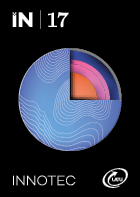Survey of the total arsenic concentration in the water coming from several sources in a rice area of Uruguay
DOI:
https://doi.org/10.26461/17.07Keywords:
As, Underground water, Rice, HG-AASAbstract
Arsenic (As) is a natural element of the earth's crust. Due to the health effects caused by its exposure, it has a great relevance in toxicological studies. The high levels of As in groundwater in Argentina and Chile are widely studied and known. However, in Uruguay there are few research studies based on the levels of As in water. In this work the determination of the total As in water samples was carried out, using atomic absorption spectrometry with hydride generation (HG-AAS). The methodology was based on the standardized method of the American Public Health Association APHA 3114 B. We evaluated linearity, accuracy and veracity as performance parameters for its implementation. A total of 49 samples of surface and underground water were analyzed. The results did not exceed the standards level established in Uruguayan regulations (20 μg L-1). Also, higher values were observed in groundwater rather than in surface water. This research is an initial work to know the As levels in water used for domestic purposes and rice plantations in Uruguay.
Downloads
References
ATSDR, 2017. CERCLA Priority list of hazardous substances [En línea]. Atlanta: ATSDR. [Consulta: 12 de octubre, 2018]. Disponible en: https://www.atsdr.cdc.gov/spl/previous/07list.html
IARC, 2014. World cancer report. Lyon: IARC.
Instituto Uruguayo de Normas Técnicas, 2008. UNIT 833: Agua potable-Requisitos. Montevideo: UNIT.
Litter, M., Armienta, M.A., Farias, S.S., eds., 2009. IBEROARSEN. Metodologías analíticas para determinación y especiación de As en aguas y suelos. Buenos Aires: CYTED.
Manganelli, A., Goso, C., Guerequiz, R., Fernández-Turiel, J.L., García Vallès, M. y Gimeno, D., 2006. Estudio preliminar del contenido de arsénico de las aguas subterráneas del suroeste de Uruguay. En: Geogaceta, 41, pp.115-118.
Mañay, N., Goso, C., Pistón, M., Fernández-Turiel, J.L., García-Vallés, M., Rejas, M. y Guerequiz, R., 2013. Groundwater arsenic content in Raigón aquifer system (San José, Uruguay). En: Revista SUG, 38, pp.20-38.
OSE, [s.d.]. Agua subterránea [En línea]. Montevideo: OSE. [Consulta: 12 de octubre de 2018]. Disponible en: http://www.ose.com.uy/agua/agua-subterranea
Smedley, P. y Kinniburgh, D., 2002. A review of the source, behaviour and distribution of arsenic in natural waters. En: Applied Geochemistry, 17(5), pp.517-568.
Spratlen M.J., Gamble M.V., Grau-Pérez, M., Kuo, C.C., Best, L.G., Yracheta, J., Francesconi, K., Goessler, W., Mossavar-Rahmani, Y., Hall, M., Umans, J.G., Fretts, A., Navas-Acien, A. Arsenic metabolism and one-carbon metabolism at low-moderate arsenic exposure: Evidence from the strong heart study. En: Food and Chemical Toxicology Journal, 105, pp.387-397.
Uruguay. Decreto 129/009, de 03 de noviembre de 2011. Diario Oficial, 14 de setiembre de 2011, No. 28.348, p.11.
WHO, 2018. Arsenic [En línea]. Geneva: WHO. [Consulta: 12 de octubre de 2018]. Disponible en: http://www.who.int/mediacentre/factsheets/fs372/en/
WHO, 2011. Guidelines for drinking-water quality [En línea]. Geneva: WHO. [Consulta: 12 de octubre de 2018]. Disponible en: http://www.who.int/water_sanitation_health/publications/2011/9789241548151_toc.pdf
WHO, 2001. Arsenic and arsenic compounds [En línea]. Geneva: WHO. (Enviromental Health Criteria, 224). [Consulta: 12 de octubre de 2018]. Disponible en: http://apps.who.int/iris/bitstream/handle/10665/42366/WHO_EHC_224.pdf;jsessionid=1FC9D7D022CC57D77AAD352F36A11B55?sequence=1
Published
How to Cite
Issue
Section
License
Los autores del manuscrito declaran conocer y aceptar los siguientes términos de responsabilidad:
Haber participado lo suficiente en el trabajo como para hacer pública la responsabilidad por su contenido.
Que el manuscrito representa un trabajo original que no fue publicado ni está siendo considerado por otra revista para su publicación, en parte o en forma íntegra, tanto impresa como electrónica.
Que en caso de ser solicitado, procurará o cooperará en la obtención y suministro de datos sobre los cuales el manuscrito esté basado.
Declara que la información divulgada que pudiera pertenecer a un tercero cuenta con la autorización correspondiente.
Autorización para la publicación y compromiso de cita de primera publicación
Los autores/as conservan los derechos de autor y ceden a la revista INNOTEC / INNOTEC Gestión el derecho de la primera publicación, con el trabajo registrado con la licencia de atribución Creative Commons Reconocimiento-NoComercial 4.0 Internacional. Creative Commons, que permite a terceros utilizar lo publicado siempre que mencionen la autoría del trabajo y a la primera publicación en esta revista sin fines comerciales.
El autor se compromete a realizar la cita completa de la edición institucional de esta primer publicación en las siguientes publicaciones -completas o parciales- efectuadas en cualquier otro medio de divulgación, impreso o electrónico.
Los autores/as pueden realizar otros acuerdos contractuales no comerciales independientes y adicionales para la distribución no exclusiva de la versión del artículo publicado en esta revista (p. ej., incluirlo en un repositorio institucional o publicarlo en un libro) siempre que indiquen claramente que el trabajo se publicó por primera vez en esta revista.
Se permite a los autores/as publicar su trabajo en Internet (por ejemplo en páginas institucionales o personales) antes y durante el proceso de revisión, ya que puede conducir a intercambios productivos y a una mayor y más rápida difusión del trabajo publicado (vea The Effect of Open Access). A su vez los autores/as autorizan al LATU a publicar el trabajo en su repositorio digital.
Los conceptos y opiniones vertidos en los artículos son de responsabilidad de sus autores.
Este obra está bajo una licencia Reconocimiento-NoComercial 4.0 Internacional.












